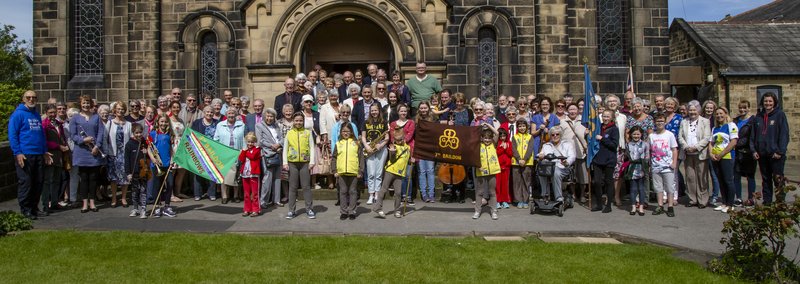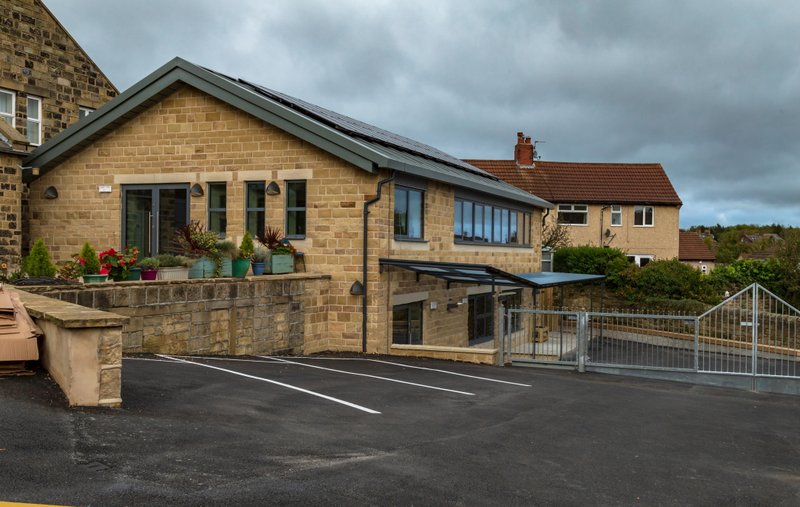Working towards net carbon zero by 2030: a case study from Bradford
08 September 2022
08 September 2022
The Methodist Church has set an aspirational target to become a net zero church by 2030. Using the steps set out in our guide for churches, John Anderson, Trustee of Baildon Methodist Church shares his church’s journey.

We are a church of 170 members and active church participants, together with 1200 community users each week. We are not in the poorest area of Bradford; nor are we in the richest. Our campaign took 15 years to complete; for the whole Connexion to reach net zero by 2030 means emergency action now.
STEP 1. Assess your building and energy usage
In 2006 we appointed an Eco-officer: the preferred term now is “Net Carbon Zero Champion”. Several grants were obtained to enable an energy assessment of all our buildings to be made. Just as important, a “Vision Group” was set up in order that the whole congregation might have a chance to envision the way forward.
We took the major decision that we were not going to plan for gradual decline but for growth. We applied for, and obtained, the status of an EcoCongregation three times in a decade. Now this scheme is known as EcoChurch. It provides a comprehensible and comprehensive framework for action in all the necessary fields. A key element was reading all the meters in the building weekly: this data provided surprises, evidence of the need to act, and proof that what we were doing saved money! The meter-reading by our full-time caretaker gradually increased his enthusiasm.
STEP 2 Take First Steps
Hearts, minds and spirits were beginning to respond. We are on a hill; we raised funds to erect a large porch on one side of our premises to prevent through-draughts from our high northern winds. The money for this was collected by asking members of the congregation to donate money based on the carbon they emitted by driving their cars or flying on holiday. Climate Stewards provides a useful means of calculating this.
Regular Creation services were held on topics such as oil or electricity; worshippers were asked to fill in questionnaires about what they would do to reduce their own and the church’s use of fossil fuels.
To concentrate minds, we set up a ‘Future Building’ group with the double meaning of working in bricks and mortar, and concurrently working out the future of our spiritual pilgrimage. Finally we set up the BIG (Building Improvement for Growth) Team to analyse all our buildings, lay out a strategy for future development and raise money to do it.
Step 3 Make a bigger impact
Baildon is an obscure moorside village on the edge of Bradford. But we were not prepared to be ignored: we wished to show that Christians could lead the reduction of global heating to preserve the marvels of God’s creation. We did not want to just talk but to act. It was essential to make a big impact to have any public impact at all. We realised that major change was needed. To do this we needed £1 million in 10 years. This we raised, much of it from the Methodist resources of churches that have been closed, some of it from trusts throughout the nation and a great deal of it from continuous local fundraising. With this money we could invest in our future. All rooms, including the church, are used daily; all are insulated; many have double glazing; some have triple glazing.

Baildon's new church hall , The Fold
All our electricity has come for a decade from renewable sources normally provided by Good Energy. Photovoltaic electricity panels on the church generate energy, together with a £1000 a year income from the former Feed-in-Tariff (FIT) scheme. We removed all the gas central heating and replaced it with far infrared electrical heating; the unit price of electricity is at present greater for electricity but there are no costly maintenance charges or boiler replacement disasters. We only use the fossil fuel of gas for cooking.
Nearly half of our energy costs derived from an outdated, electrically heated, heavily used, but completely uninsulated, separate hall. With foresight, we took the vital decision to demolish it and replace it with a two-storey building, the first on church premises in Britain constructed to standards similar to those of a Passivhaus. It has insulated walls nine layers thick, a completely airtight envelope and low usage of electricity for heating and all other uses. There are 8 kW-peak photovoltaic panels on its roof. We installed three electric vehicle charging points.
Step 4. Down to Net Zero
We have reached net zero, if one allows our photovoltaic-generated electricity to offset our tiny gas usage, one accepts that all renewably generated electricity is carbon free and one excludes embedded carbon in our fabric and supplies.
As Jesus Great Commission states in Mark 16:15 ‘Proclaim the good news to the whole creation.’ This we do.
John D Anderson. Trustee of Baildon Methodist Church
Our guide to working towards net carbon zero by 2030 can be found here.